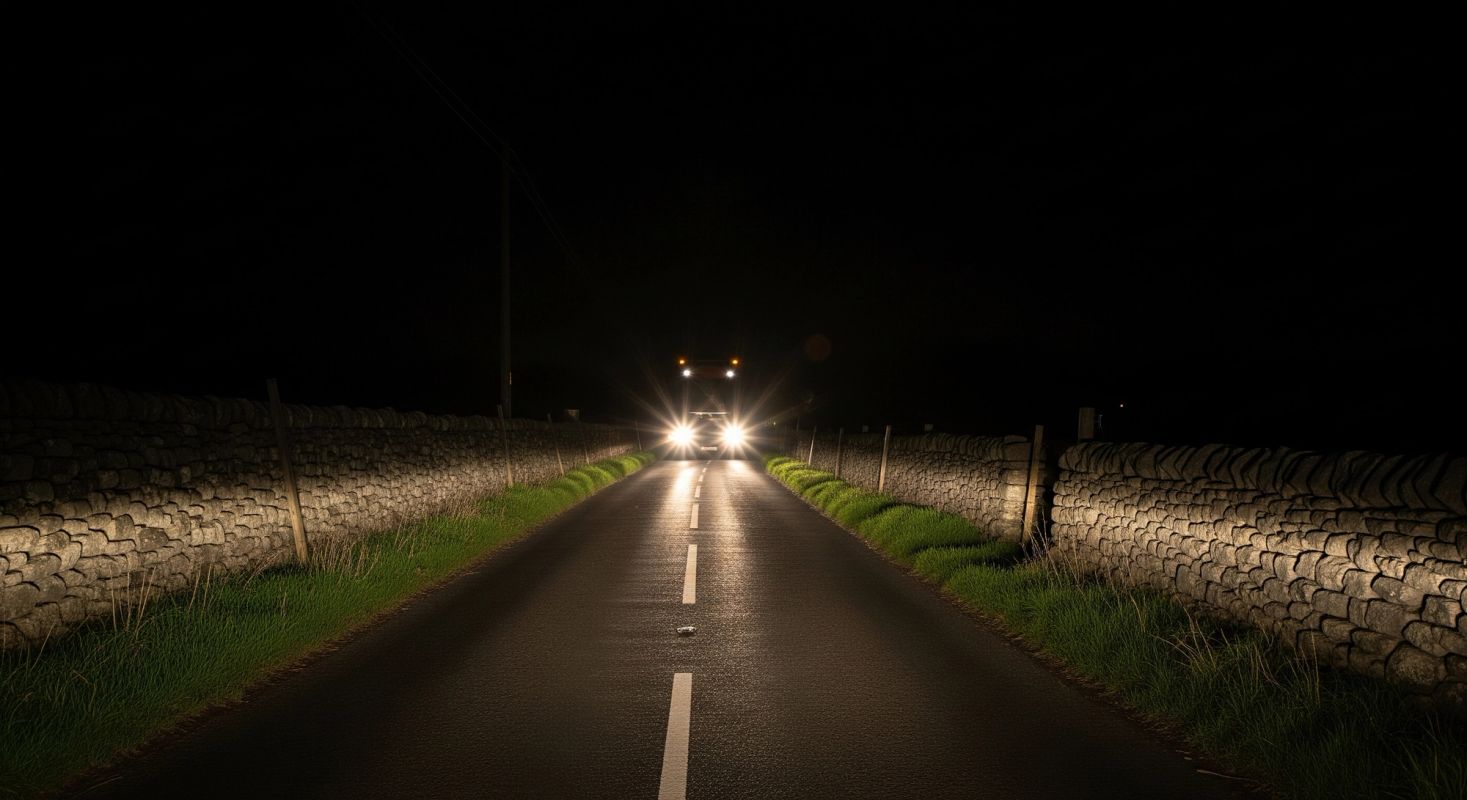The Challenges of Driving at Night
We take a look at the perils of night driving and the extra information gathering opportunities
Lights on, Attention Dimmed?
Many drivers view the onset of dusk as a signal to reduce their commitment to the road. Headlights illuminate but with them often comes an accompanying dimming of situational awareness and a reduction in what I would term genuine control.
Night driving, far from being a time for trepidation, presents a unique opportunity to demonstrate superior observation, anticipation, and machine empathy. It demands a heightened level of precision and, crucially, a profound understanding of the limitations and capabilities of both your vehicle and, indeed, yourself.
Let's dispense immediately with the notion that "it's harder at night." Nonsense. It's different at night. The visual landscape transforms, yes, but the fundamental principles of advanced driving remain steadfast. In fact, the reduced visual clutter can, for the truly attentive driver, offer a purer canvas upon which to paint a smooth, progressive, and safe passage.
The Symphony of Light (and its Absence)
Your headlights are not merely a legal requirement; they are a sophisticated tool for information gathering. Are you utilising them as such? I often see drivers running on dipped beam when full beam is perfectly permissible and, indeed, highly advantageous.
The rule is simple, yet so often ignored: use full beam whenever you are not dazzling another road user. This maximises your forward vision, illuminating hazards, road furniture, and the subtle nuances of the road surface far earlier. It's a fundamental tenet of active safety.
However, full beam is a double-edged sword. Its indiscriminate use is not only discourteous but dangerous. The dazzling effect on oncoming drivers is not merely uncomfortable; it momentarily blinds them, compromising their ability to react.
Develop the discipline to dip your lights early. Not at the last possible moment, but as soon as the glow of an oncoming vehicle's lights becomes apparent on the horizon, or indeed, as soon as you detect the reflective gleam of their headlights in your mirrors when approaching from behind. This demonstrates foresight and, frankly, good manners – a hallmark of a truly advanced driver.
Equally, pay attention to your own dashboard illumination. Many modern vehicles offer adjustable brightness. A dashboard that glows like a beacon at night is a distraction, compromising your natural night vision and drawing your eyes inwards rather than outwards to the crucial road ahead. Dim it down. Only the essential information should be readily available; the rest is visual noise.
Beyond the Beam: Reading the Road
While your headlights cut a swathe through the darkness, they don't illuminate the entire world. This is where your other senses, and your ingrained understanding of roadcraft, come into play.
The "Black Hole" Effect
Rural roads, unlit and winding, often present what I term the "black hole" effect. Your headlights illuminate only a finite arc, beyond which lies apparent nothingness. This is where your anticipation must be at its peak. Rely on the subtle cues: the faint shimmer of reflective road signs, the distant glow of a farmhouse light, the outline of trees against a marginally lighter sky. These are your breadcrumbs in the darkness, guiding you towards the unseen.
Reading the Reflections
Pay meticulous attention to reflections. The glint of a cat's eyes on the road ahead isn't just a marker; it tells you about the curvature of the road.
The reflection of a distant street light on a wet patch can indicate a change in surface or an upcoming junction. This is observational driving at its most refined.
Peripheral Vision and the Unseen
Your peripheral vision, though less acute at night, remains vital. It's the silent sentinel, picking up subtle movements or shapes that might otherwise be missed. Avoid fixating solely on the cone of your headlights.
Allow your eyes to constantly scan, embracing the wider visual field, even if dimly perceived. This holistic approach to observation is what separates the merely competent from the truly proficient.
Mitigating the Fatigue Factor
Night driving, particularly over extended periods, is more fatiguing. The brain works harder to interpret the limited visual data. Therefore, regular breaks are not merely advisable; they are imperative.
A short stop, a stretch, a moment to refresh your focus – these are not luxuries, but essential components of a safe nocturnal journey. And, of course, if you feel the encroaching tendrils of fatigue, the only responsible course of action is to stop and rest. Your destination, however urgent, is secondary to your safety and the safety of others.
The Advanced Driver's Advantage
Ultimately, night driving is a supreme test of an advanced driver's abilities. It demands heightened concentration, precise use of light, and an unwavering commitment to observation and anticipation.
It's an environment where the benefits of a smooth, progressive driving style become even more apparent. Abrupt steering inputs, harsh braking, and sudden acceleration are amplified in the darkness, unsettling the vehicle and, more importantly, your own composure.
Master the art of the night, and you will not only be a safer driver but a more accomplished one. The road, even cloaked in shadow, yields its secrets to those who approach it with respect, intelligence, and the unwavering application of advanced driving principles. Drive on, then, into the night, but do so with purpose, precision, and profound awareness.
June 2025
« Back to Blog

